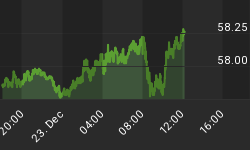Bull markets generate new issues and great bull markets inspire new investment tools. As this one blossoms, it is generating new descriptions as well as growing concern in high places about risk.
On May 6, Fed Governor Susan Schmidt Bies made a speech titled "Financial Innovation and Effective Risk Management", that included the following: "Some of the complex structured finance transactions we have recently seen reflect and incorporate innovations in credit risk transfer mechanisms - credit default swaps and synthetic collateralized debt obligations in particular."
The next paragraph explained that these creations "provide flexibility in tailoring and marketing financial transactions to match the risk appetites of investors".
Getting into a sector that has performed very well is last week's launch of an ETF base upon gold mining stocks, including some "small companies from around the world". The symbol is GDX and it is interesting for two reasons. One is that it is a gold innovation and the second is that it will probably act contra cyclical to the general stock and corporate bond markets.
But in the orthodox side of financial innovation, a report in the May 25 Financial Times is noteworthy: "Led by banks in Germany, Switzerland and Italy, investors have been confronted by a bewildering range of structured products. While some, such as warrants, are familiar, others, such as highly complex synthetics with exotic trademarks, are harder to grasp.
But whatever their characteristics, demand is booming, whether from retail investors seeking guaranteed returns along with some downside capital protection, or institutions looking for more arcane products. The number of monthly new listings on the SWX alone doubled from 700 in the autumn to more than 1,400 in March."
Note the use of the term "bewildering" and compare it to a description of financial innovation made by an exasperated writer in 1720 - the year the infamous South Sea Bubble blew out. "They can ruin men silently, undermine and impoverish, fiddle them out of their money, by the strange, unheard of engines of discount, transfers, tallies, debentures, shares, projects, and the devil and all figures and hard names."
So, to answer the question So What's New? - not much.
















